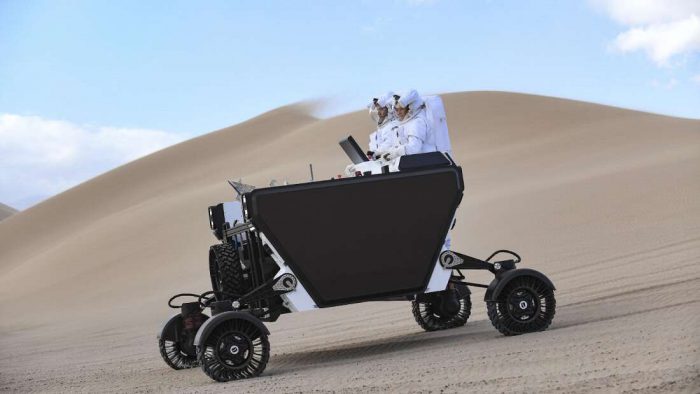Though there's all sorts of cool new stuff happening at NASA—the James Webb Space Telescope, Space X Crew Dragon vehicles, the adventures of Martian rovers—the new Artemis program kind of takes the cake.
This is the series of upcoming missions to the Moon expected over the next decade or so. Happening over 50 years after the Apollo program first took humans there, Artemis is about a lot more than just 'going back to the Moon'.
These missions are designed to set up permanent bases there. It will not only be the furthest people have lived away from Earth. They will be an important living laboratory for how humans can survive long term in a whole other environment—and a testing ground for how to one day send missions to Mars.
To pull this off, scientists and engineers need to design a whole new breed of gadgets, devices, and vehicles. One of those things? The lunar rover!
One company stepping forward here is Venturi Astrolab. They have created a new rover prototype called FLEX (Flexible Logistics and Exploration). And to test drive it recently, they reached out to someone who knows a thing or two about being in space.
Canadian astronaut Chris Hadfield!
Let's go for a spin!
Today, Hadfield is well known as an author, science educator, and even musician! But he earned his credentials the hard way, but being a test pilot and member of crews on the International Space Station (ISS). He knows from experience that in space, you're only as good as the gear that you have with you. Space and foreign planets are not places where humans can survive naturally. We need all the help we can get.
For any Moon mission, a reliable lunar rover will be crucial. They were vital in later Apollo missions, allowing astronauts to move equipment, rock samples, and themselves from place to place with ease over very difficult terrain. That is what FLEX is designed to do, as well, except in a way that is far superior to anything that the Apollo astronauts used.
Hadfield test drove FLEX in Death Valley in Nevada—this desert is one of the closest environments to the Moon and Mars that is available on Earth. What did he think of it? You can find out by watching the video below!
Cool, right? Who wants to drive a FLEX next?
 Wheeee! Who's ready for a spin around the Moon? (Astrolab Venturi)
Wheeee! Who's ready for a spin around the Moon? (Astrolab Venturi)









